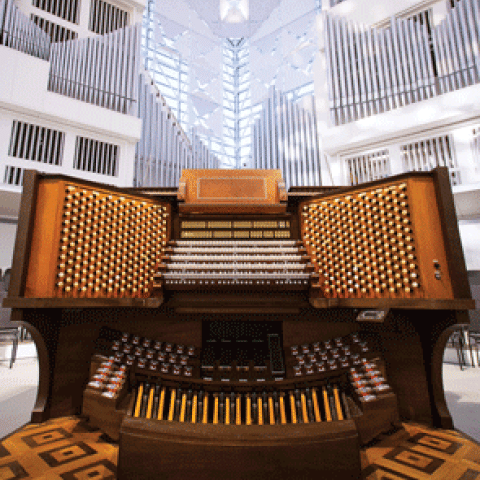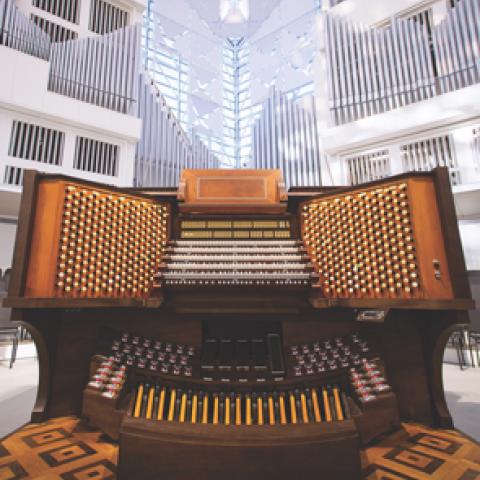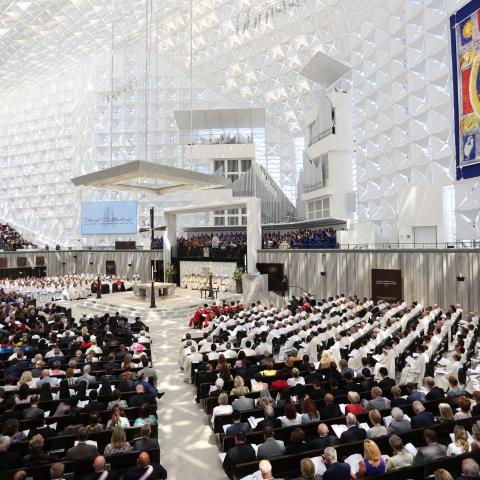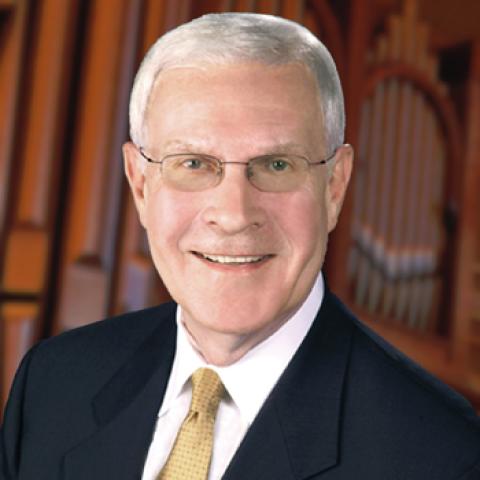
The Gothic Catalog announces a new book, The Hazel Wright Organ: Christ Cathedral, Garden Grove, CA ($30), by David Crean, with a foreword by Frederick Swann. The book provides a detailed look at the history of the Hazel Wright Organ, dedicated in 1982 at the Crystal Cathedral, now Christ Cathedral, highlighted by historical photographs, interviews with key players, and complete specifications, plus a list of all concert programs and performers from 1982 to 1998.
The Hazel Wright Organ (see the cover feature of the April 2020 issue) is the fifth largest pipe organ in the world and was made possible by significant donations from Hazel Wright, a regular viewer of Robert Schuller’s weekly television program Hour of Power. The instrument was built by Fratelli Ruffatti after a design by Virgil Fox, using the 100-rank Aeolian-Skinner organ from Philharmonic Hall in New York City and the 97-rank Ruffatti organ installed in 1977 in the Robert Neutra-designed sanctuary of the Garden Grove Community Church, the predecessor congregation of the Crystal Cathedral. Ruffatti added 29 ranks to the organ at that time. The instrument was enlarged during the 16-year tenure of the Crystal Cathedral’s organist emeritus, Frederick Swann. The re-imagined and restored organ currently comprises five manuals, 302 stops, 293 ranks over fourteen divisions, and has more than 17,106 pipes.
Gothic also offers two digital-only recordings, both featuring the Ruffatti organ. The Hazel Wright Organ (G-49337) features David Ball, cathedral organist and a member of The Diapason’s 20 Under 30 Class of 2017, assisted by Emma Whitten, associate organist of the cathedral. Whitten is the featured performer in Hazel is Back! (G-49338).
For further information: gothic-catalog.com.







